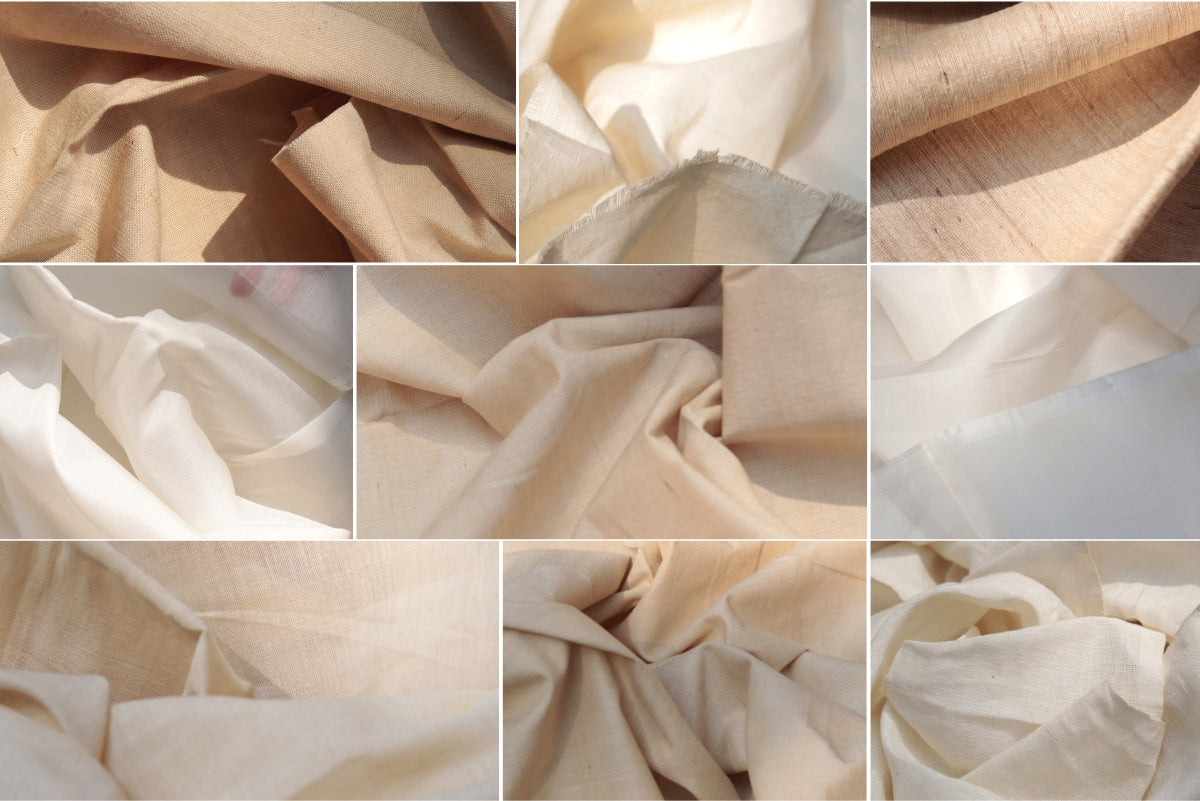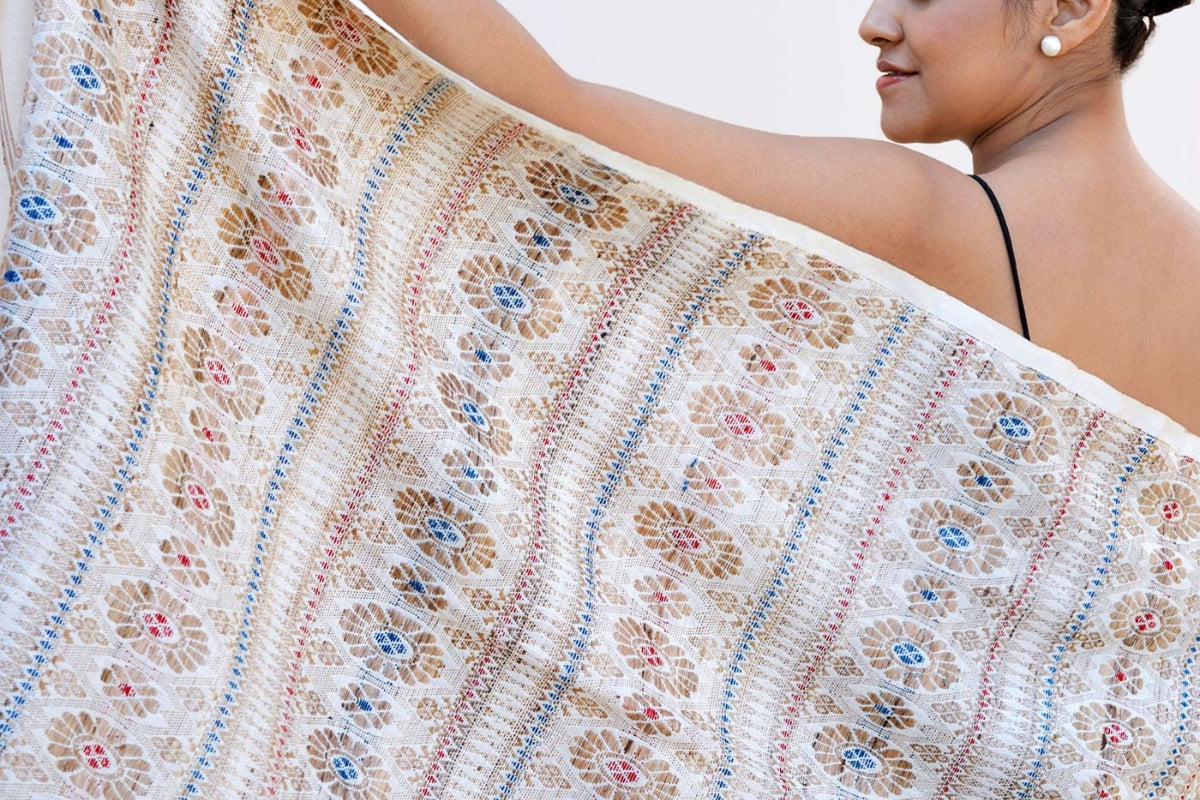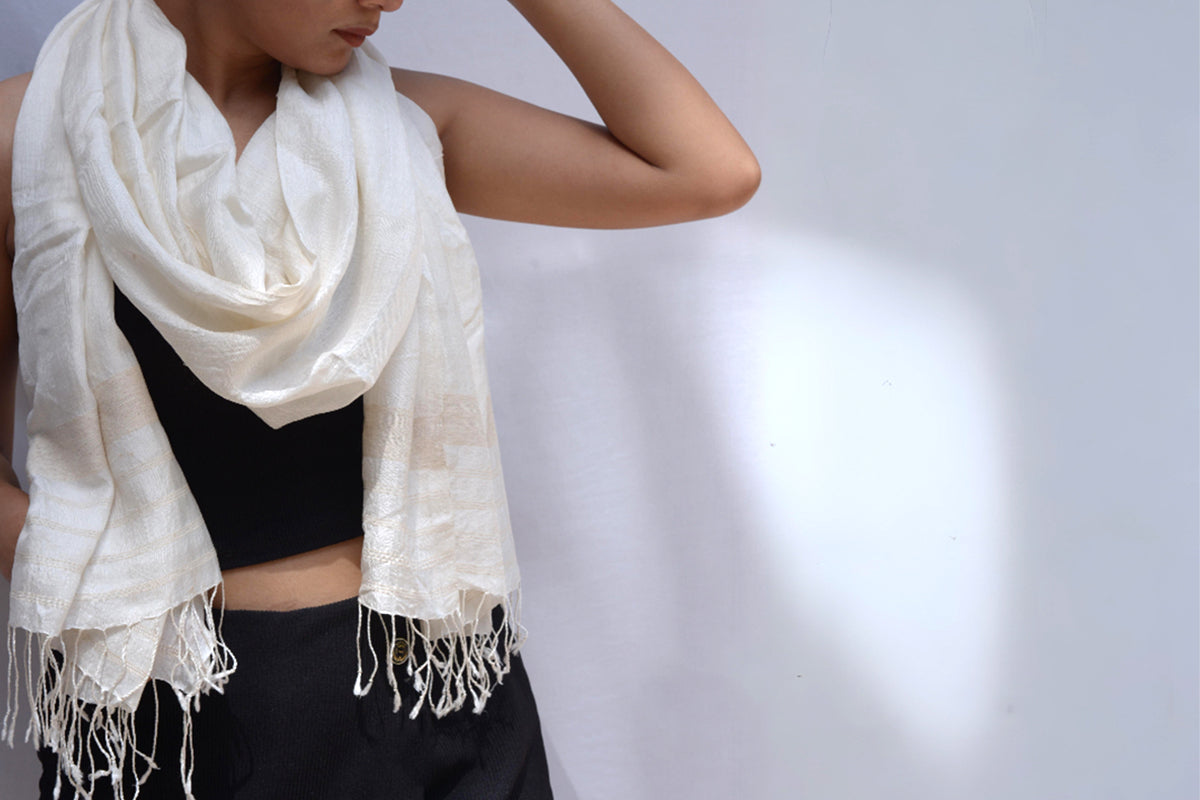In the lush heartlands of Assam, where silk threads have connected generations, a quiet revolution is unfolding. It’s called BLEND — and it’s changing the way we think about tradition, innovation, and the timeless craft of silk weaving.
For centuries, the weavers of Assam have spun stories into fabric. But today, they face unprecedented challenges: climate change, depleting forests, and a market flooded with cheap synthetic silks. With the future of traditional Eri and Muga silk in jeopardy, something needed to change — not just how we sell silk, but how we think about it.
That’s where Dzukou’s BLEND project comes in. Instead of imposing outside ideas, BLEND does something radical: it invites artisans themselves to become material innovators. By experimenting with new blends of natural yarns — from bamboo and banana silk to rose and lotus fibers — these weavers are discovering textures and experiences never before seen in their looms.
“Can we create fabrics so rich in touch, feel, and story that people will cherish them — even before knowing they’re sustainable?”
This simple question is at the heart of BLEND. And the answer, emerging from the looms of 1,900 artisans across five clusters in Assam, is a resounding yes.
From Routine to Reflection
Traditionally, weaving in Assam has been passed down like an heirloom — rich in skill but often stuck in routine. BLEND breaks this cycle by introducing Materials Experience, a fresh approach that asks: How does a fabric feel? What emotion does it evoke? How does it move with the body?
Through hands-on workshops, artisans have been playing with new blends, like pairing the soft seductiveness of rose silk with the rugged texture of Eri-bamboo. They’ve explored how different yarn combinations affect softness, stiffness, or even the sound a fabric makes when moved.
And the change isn’t just technical. As one cluster leader shared in an interview, “We’re thinking now about what people feel when they touch our fabrics. It’s a new way of weaving stories.
 Experimenting with Purpose
Experimenting with Purpose
BLEND isn’t about teaching artisans what to do — it’s about giving them space to experiment. Over 90 woven samples were developed, each a unique exploration of how different natural fibers blend on traditional looms. Some experiments failed — like pure rose silk that frayed too easily — but others led to beautiful surprises, like blends that feel light as air yet strong enough for daily wear.
Post-processing tests, from eco-printing to AZO-free dyeing, pushed the possibilities even further. Each experiment was documented, shared, and refined — transforming traditional weavers into confident material designers.
A Model for Resilience
At its core, BLEND shows that true innovation in craft doesn’t come from top-down instructions. It grows from bottom-up co-experimentation, rooted in respect for the deep knowledge artisans already hold. By focusing on what artisans feel when they work with new materials — and what customers will feel when they touch the final product — BLEND turns every scarf, shawl, or saree into a sensorial experience.
And in a world where climate change is already reshaping landscapes and livelihoods, this approach does more than create beautiful fabrics. It makes traditional communities more adaptable, resilient, and ready for a future where what we feel matters as much as what we wear.
Beyond Sustainability: Crafting Love at First Touch
So often, brands try to sell sustainability by appealing to guilt or moral obligation. BLEND flips the script: what if sustainability wasn’t about sacrifice, but about desire? What if we could make materials so enticing, so full of life, that people fall in love with them — and only later realize they’re choosing something kind to the planet?
That’s the promise of BLEND. And in the vibrant homes of Assam’s weavers, it’s already coming to life — one experimental yarn at a time
Beyond the Blog: Dive Into the Research
The journey of BLEND isn’t just a story; it’s backed by deep research and practical experimentation. If you’d like to explore the insights, process, and detailed findings, we’ve made the full papers available for you:
🔗 Read the papers here that is submitted to BICCS






1 comment
Buy Cotton Yarn Online in India | Chowdary Spinners
https://chowdaryspinners.com/
Buy Yarn in India, Yarn Exporter/ Importer, Slub Yarn & Hank Yarn
Top cotton yarn supplier and exporter in India Specialising in compact, hank, slub and dyed yarn for textile needs